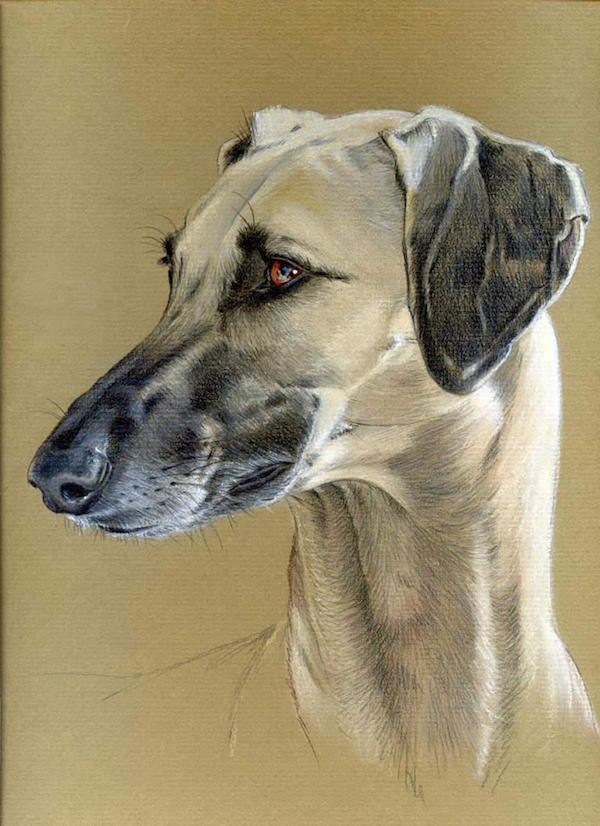
It was a French soldier, General Daumas, who wrote of the local dogs during his posting in Algeria in 1835, and in particular, the Bedouin Greyhound we know better as the Sloughi (pronounced “Slu-ghee”). He described how the dogs were decorated with jeweled collars, their legs branded and their bodies painted with henna.
Branding and body painting a dog is deeply rooted in tradition and still happens in parts of Morocco today. Henna may be applied on a dog’s legs, throat, chest, croup, throat, and the top of his head on both males and females. It’s believed that the plant dye is not only good for the dogs’ bones, in Tunisia, the dogs’ feet are dipped in henna to ward off the “evil eye.” This dog is decorated with the tree of life and the hand of Fatimah
Traditionally, the inside of the Sloughi’s front legs are branded when the dog is six months old. Using a heated “cerpette,” three slanted-horizontal lines are branded because it’s thought to improve the dog’s strength, keep his legs straight (to improve his running) and prevent cramps. We don’t have permission to share the photo, but if you visit this page, the fourth photograph from the top of a dog named “Schaab” is brandmarked legs.
*Mehendi is the art of applying henna in decorative patterns to the body.
Image by Gloria C. Illustration – you can find more of her exquisite work and contact the artist here.
